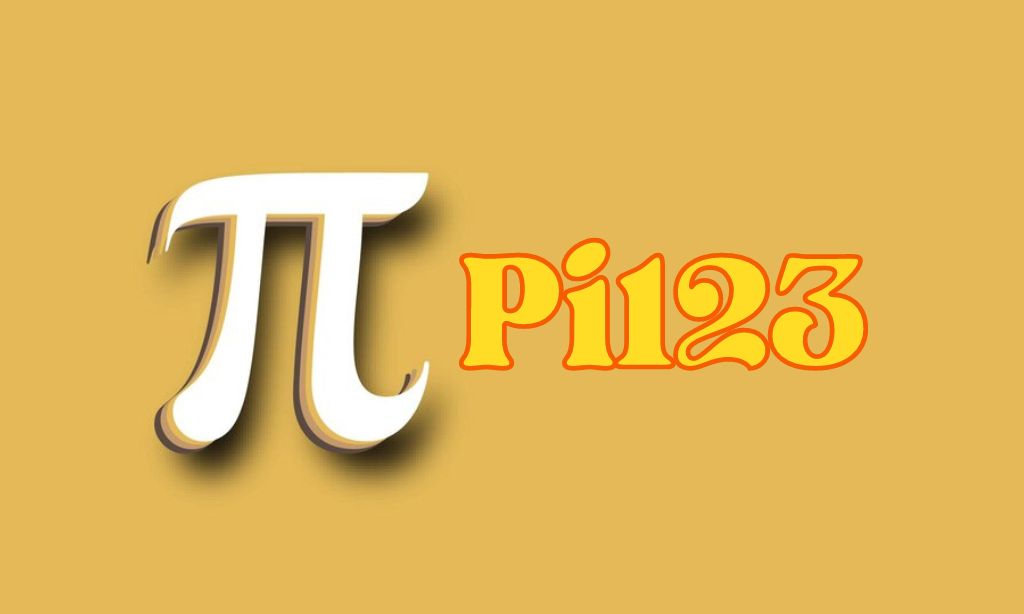Introduction
Pi123 is a numeric constant that has fascinated humans for centuries. Though simple and compactly represented, pi conceals complex mathematical properties that are still being uncovered. This article will explore the mysterious nature and applications of pi through history, and how it continues shaping our understanding of numbers, geometry, and the physical world.
History of Pi
The earliest computations of pi can be traced back to ancient Egypt and Babylon around 1800 BC, where it was used for problems involving circles. In the Bible, pi is indirectly mentioned when building Solomon’s temple. In 250 BC, Archimedes approximated pi to be between 3 1/7 and 3 10/71, laying the foundations for modern numerical computation. Over the next 2000 years, mathematicians like Madhava of Sangamagrama and Ulugh Beg estimated pi to be over 32 digits.
In the modern era, computation power exploded thanks to advancements in calculators and computers. In 1699, William Jones discovered the formula for pi involving trigonometric and logarithmic functions. In 1949, the ENIAC computer calculated pi to over 2,000 digits. In 2019, Google and their employees broke the record by calculating pi to over 31.4 trillion digits.
Properties of Pi
- Pi is a transcendental and irrational number, meaning it cannot be expressed as a fraction or solution to a polynomial equation with rational coefficients.
- It is an algebraic number, as it is a root of the quadratic equation x2 + 1 = 0.
- Pi is a normal number, indicating its digits are naturally distributed and independent of each other.
- Pi is also a “classical constant”, with applications across physics, engineering, mathematics, and even arts and culture.
- Like other famous constants like e and φ, pi elegantly governs deep aspects of nature without obvious physical significance itself.

Uses of Pi in Geometry
- Pi represents the ratio of a circle’s circumference to its diameter. It also relates to the area of circles via πr^2.
- Archimedes used pi to accurately approximate the surface areas and volumes of spheres, cylinders, cones and other solids based on cylindrical shells.
- In trigonometry, pi allows relating angles and arc lengths on a unit circle via sin, cos and other circular functions.
- Stereographic projection, generating maps from globes, relies on pi to precisely transform spherical to planar surfaces.
- Fibonacci showed pi governs geometric spirals, ubiquitous in art, architecture, seashells and other biological forms.
Uses of Pi in Engineering and Physics
- Pi is crucial for fields measuring circular phenomena like mechanics, acoustics, optics and electromagnetic theory.
- In electronics and engineering, pi facilitates calculating the physical properties of inductors, capacitors, transmission lines and other lumped circuit elements.
- Centripetal and centrifugal forces involving uniform circular motion incorporate pi via their dependence on angular speeds and circumferences.
- Special relativity employs pi through Lorentz transformations between reference frames undergoing circular motion at relativistic speeds.
- Quantum mechanics relies on pi for solutions involving particle motion constrained to surfaces like thin films and quantum dots.
Applications of Pi today
Pi continues finding new applications thanks to advancing technology. Here are some modern uses:
- Computer software exploits pi for high-precision rounding, random number generation, digital signal processing and encryption algorithms.
- Pi computations benchmark new supercomputers trying to set records for the highest calculated pi digits.
- PiDay (March 14th) celebrations inspire mathematical art, pi recitation competitions and demonstrations spreading pi awareness.
- Particle accelerators apply pi-based calculus for modelling subatomic collisions, simulations essential for discoveries.
- Spacecraft navigation and astronomical observations leverage pi-governed spherical trigonometry for coordinate transformations between celestial spheres.
- Engineers design complex pipe systems, electrical network topologies and mechanical linkages exploiting pi’s elegant geometric properties.

The Future of Pi
As our ability to manipulate information exponentially increases, pi is poised to reveal even deeper mysteries. Mathematicians continue exploring its relationship to seemingly unrelated fields like string theory, where pi may govern solutions to unifying grand challenges. Quantum computers may calculate pi to unprecedented precision, exposing patterns too subtle for classical computers. We’ve only scratched the surface of pi’s complexity – its role in shaping our quantitative understanding of nature is assured far into the future. Pi’s simple yet profound impact reminds us that elegance and discovery often go hand in hand.
Conclusion
From ancient civilizations to modern supercomputers, pi has inspired Wonder through the ages. Though a single digit distinguishes it from other numbers, pi governs broad areas of science, art and technology with intuitive geometric and algebraic properties. As humanity’s technological and intellectual frontiers continue expanding, pi will undoubtedly play an important role in uncovering new fundamental insights. Its timeless mysteries ensure Pi’s fascinating story is far from over.











































Leave a Reply